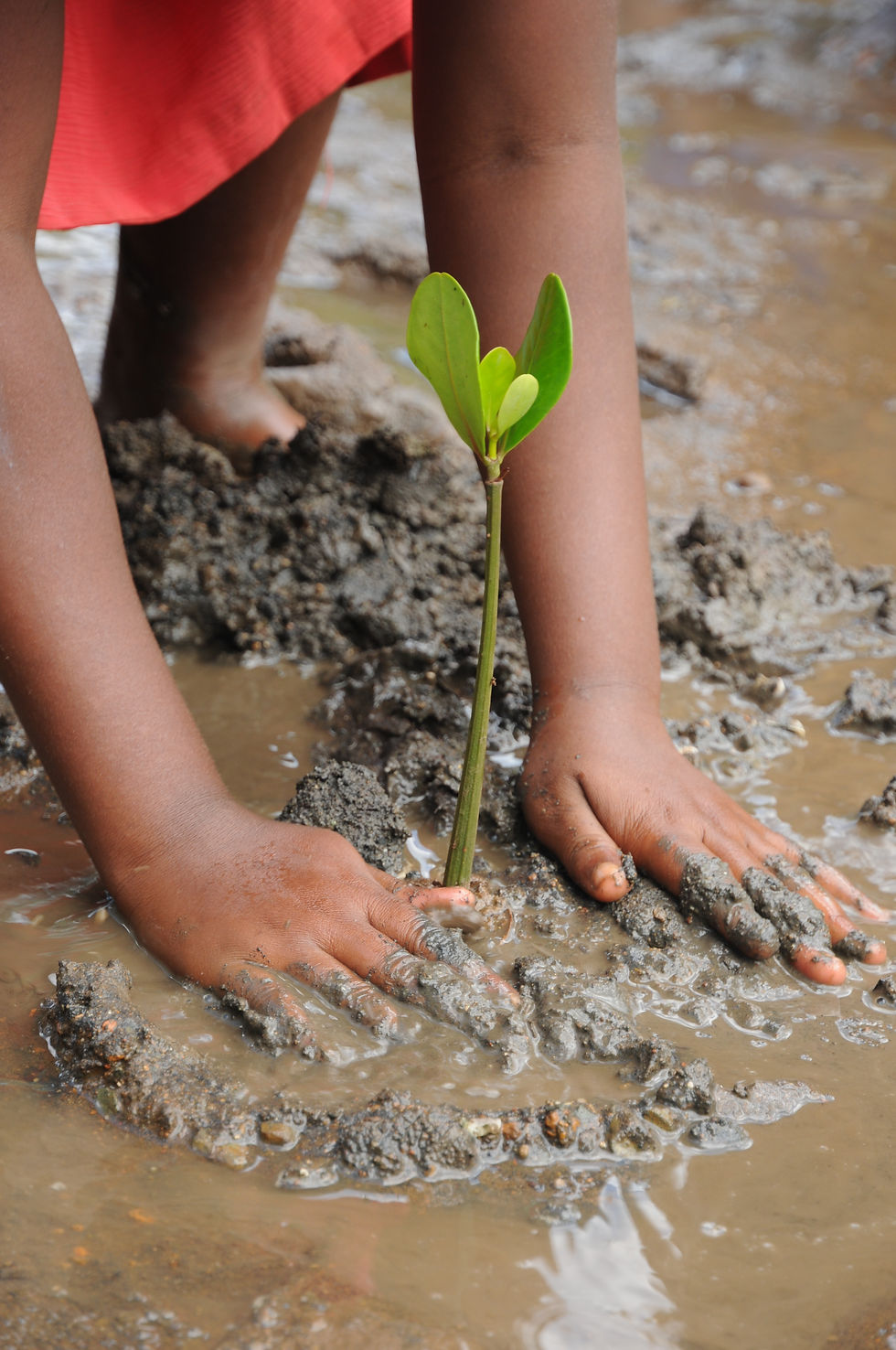The Art of Seeing Differently
- Ocean Hoptimism

- Nov 11
- 4 min read
Diane Arbus and the Discipline of Overlooked Hope
Diane Arbus made a career out of pointing her camera toward what most people turned away from. Her portraits of persons with dwarfism, circus performers, drag queens, and ordinary people in their private strangeness unsettled a world accustomed to conventionally perceived beauty as symmetry and perfection. Arbus once said, “A photograph is a secret about a secret. The more it tells you, the less you know.” She understood that attention itself is an act of transformation—that to look directly at what’s been exiled from polite sightlines is to make the invisible visible again. This act of uncompromising witness, this insistence on inclusion, is where a difficult, essential kind of hope begins.

In a different field, but with the same instinct, hope often hides in the margins. Environmental stories are dominated by two genres: the postcard of beauty and the obituary of loss. Coral reefs as paradise; coral reefs as graveyard. Between those extremes, there are quieter, messier stories—the ones about people still trying, places still healing, species that refuse to give up. Like Arbus’s subjects, they’re not conventionally photogenic. They don’t fit the narrative arc of despair or triumph. But they are true, and truth is its own form of beauty and its own wellspring of possibility.
Arbus’s work asked viewers to sit with discomfort. To question why we find some faces unsettling, or some lives “other.” In conservation, that same discomfort surfaces when we confront stories that don’t fit our preferred scripts for success. It’s easier to scroll past yet another story of ecological collapse or to share a perfect blue-planet image than to linger on a small act of recovery: a polluted bay slowly cleansing, a fisher changing methods, a community reefing oysters by hand. Accepting these small, partial victories requires moral discipline—the same discipline Arbus demanded—to shift our narrative of what a "successful" outcome must look like. These stories don't shout. They whisper. They ask for patience. And, like Arbus’s portraits, they alter us when we let them in.

Take mangrove restoration, for instance. A newly replanted stand is rarely picturesque: gangly saplings jutting from barren mudflats, water still cloudy from sediment not being stabilized by roots that have yet to develop. It’s an image midway between ruin and renewal—awkward, incomplete, unresolved.
Yet, as with an Arbus portrait, its truth lies in the in-between. Each sticklike seedling carries a future forest in potential, a story not yet edited for beauty or finality. To look at such a scene and still feel hope requires the same discipline Arbus demanded of her viewers: to see value in what’s unfinished and to understand that grace can exist long before symmetry returns.
The Challenge to Our Moral Imagination

Consider the initial, reflexive flinch when confronting an Arbus portrait. The impulse to look away. This is not simply a reaction to difference, but a challenge to our internal framework of what deserves beauty and attention. Similarly, in conservation, the stories of partial healing or incremental change often lack the dramatic catharsis of a complete victory or utter defeat. They demand a more difficult form of witness: one that sits in the frustrating, non-linear reality of effort. The collapse headline offers a clean, tragic narrative; the story of a small, local victory requires us to recalibrate our entire definition of success. Both Arbus's work and the stories of overlooked hope force us to confront the limitations of our own moral imagination and the narratives we use to keep the world orderly.
Radical Seeing and Tangible Action
Both disciplines, photography and conservation, depend on how we see. Arbus expanded the moral aperture of photography; she made empathy a technical skill. Ocean work, at its best, does the same. To focus on the marginalized—coastal communities, unseen species, small local victories—is not sentimental; it’s radical seeing. It resists the flattening narrative that everything is either lost or saved. It insists that the world is still becoming, still strange, still full of stories worth knowing.
The discipline Arbus teaches is ultimately one of active engagement. It is not enough to simply see the overlooked; we must change our behavior based on that sight. For the viewer of Arbus, it means acknowledging the subject’s profound, complicated humanity. For the person engaged with the environment, it means shifting focus and resources away from the grand, impossible schemes and toward the localized, achievable increments of progress—like a mangrove nursery slowly taking hold in unstable mud, each sapling a small defiance against collapse. This is the radical potential of overlooked hope: it turns philosophical sight into tangible, decentralized action.

Arbus once described her attraction to her subjects as “the gap between intention and effect—what you wanted to look like and what you can’t help but look like.” That gap is where honesty lives. In conservation, we might call it humility: the willingness to see the ocean not as a mirror of our fears or ideals, but as its own ungovernable presence. When we stop pandering to the easy or expected—the pretty picture, the catastrophe headline—we find a more complex truth, and sometimes, a tender one.
Try this: next time you scroll a feed full of environmental disaster or perfection, pause on a story that’s small, strange, or stubbornly hopeful. Share it. Tell someone why it matters. The practice of attention is contagious, and it’s one of the quiet ways we remake the world.
Because real hope, like a mangrove stand replanted by hand, often looks awkward and uneven at first. Some shoots fail, others root. But given time and attention, they knit together, softening shorelines, slowing storms, trapping mud and sediment, making new ground where erosion once ruled. Hope, when it’s real, often looks a little like an Arbus portrait: imperfect, defiant, alive. It startles us into attention and changes what we believe is possible.



Comments